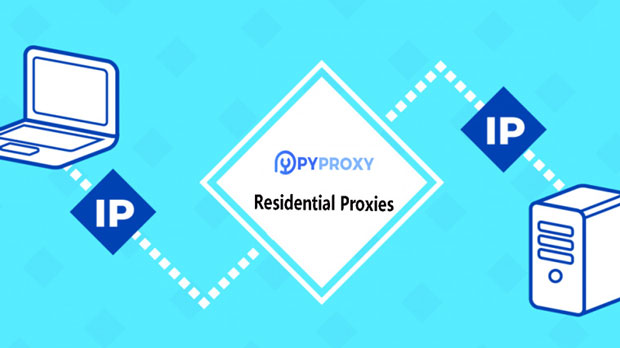In the context of HTTPS proxies, the difference between dynamic proxy and static proxy is crucial to understanding how requests are handled and routed. Both methods have distinct roles and behaviors when managing secure HTTP requests, and their differences significantly impact performance, flexibility, and ease of use. static proxies rely on predefined configurations, which offer limited adaptability but are faster in certain scenarios. On the other hand, dynamic proxies are more flexible, adjusting in real-time based on the incoming request characteristics, which increases complexity but can enhance scalability. This article will delve into these differences, explaining how each method functions in HTTPS proxies, and providing insights into their practical applications. Static Proxy: Fixed and Predefined RoutesStatic proxies are characterized by their use of predefined routes and configurations. In an HTTPS proxy setup, static proxies are typically configured at the outset, where all incoming requests are processed through a fixed set of rules or routes defined in advance. The primary advantage of this setup is its simplicity. Once the proxy is configured, it requires little to no adjustment, making it ideal for scenarios where the nature of the traffic remains constant over time.The main advantage of static proxies lies in their performance efficiency. Since the routing rules are predetermined, the proxy server can quickly direct traffic to the appropriate destination without needing to assess the incoming request in real time. This reduces processing overhead and allows for faster responses in environments with predictable traffic patterns.However, the limitation of static proxies is their lack of flexibility. Static proxies are not well-suited to dynamic or complex network conditions where requests may vary significantly. Any change in the network environment or traffic pattern could require manual reconfiguration of the proxy, which can be time-consuming and error-prone.Dynamic Proxy: Real-time Adaptability and FlexibilityDynamic proxies, in contrast to static ones, offer real-time adaptability. In an HTTPS proxy configuration, a dynamic proxy can assess the content and characteristics of each incoming request before determining how to route it. This flexibility enables dynamic proxies to adjust their behavior based on the request type, source, or other parameters, such as the load on various backend servers.The core advantage of dynamic proxies is their adaptability. Unlike static proxies, which are bound by fixed rules, dynamic proxies can provide tailored routing strategies that are optimized for varying traffic conditions. This is particularly beneficial in environments with fluctuating network traffic, where demands may change based on time of day, user load, or specific types of requests.Another key feature of dynamic proxies is their ability to improve scalability. As traffic patterns shift, a dynamic proxy can automatically adjust its routes or allocate resources more effectively, enhancing the overall efficiency of the proxy server. This makes dynamic proxies ideal for large-scale applications, cloud environments, or systems with high variability in traffic.However, the trade-off for this flexibility is increased complexity. Dynamic proxies require more sophisticated mechanisms for analyzing and managing incoming requests. This not only adds overhead to the system but also requires more resources to maintain. Additionally, the increased processing time needed to assess each request can result in slower performance compared to static proxies, particularly in scenarios where real-time decision-making is unnecessary.Performance Comparison: Static vs. Dynamic Proxy in HTTPS ProxiesWhen comparing the performance of static and dynamic proxies in HTTPS environments, several factors must be considered. Static proxies tend to offer faster processing speeds due to their fixed configurations, which avoid the need for real-time decision-making. This makes static proxies an excellent choice for environments where the traffic is predictable, such as enterprise networks or applications with stable traffic patterns.On the other hand, dynamic proxies, while more flexible, may suffer from performance overhead due to their real-time processing of incoming requests. The proxy must analyze the request, determine the appropriate routing path, and allocate resources dynamically. This can result in higher latency and more resource consumption, which could degrade performance if not managed properly.For high-traffic systems that require constant scaling or adaptation to fluctuating conditions, dynamic proxies offer better long-term advantages. Their ability to adjust routing strategies based on real-time factors ensures that they can handle varying demands more effectively, even though they may introduce higher latency during periods of intensive traffic.Scalability and Flexibility: Dynamic Proxy's AdvantageScalability is one of the key advantages of dynamic proxies over static proxies. In an HTTPS proxy setup, scalability refers to the ability of the proxy to handle increasing traffic or adapt to changing network conditions without significant reconfiguration. Dynamic proxies excel in scenarios where scalability is a priority. As traffic grows or fluctuates, dynamic proxies can adapt in real-time, adjusting their routing strategies to ensure that traffic is managed efficiently. This is especially valuable in cloud computing environments or distributed networks, where demand can vary significantly based on factors like geographic location, server load, or user behavior.In contrast, static proxies do not inherently support scalability. Once set up, static proxies rely on fixed routing paths, making it difficult to scale up without manual reconfiguration. This is particularly challenging in large-scale systems, where traffic conditions can change rapidly. Static proxies also have limited ability to balance loads across multiple servers or resources, which could lead to bottlenecks if traffic becomes too heavy.Security Considerations: Handling HTTPS TrafficBoth static and dynamic proxies must be capable of handling HTTPS traffic securely, ensuring data integrity and confidentiality. Static proxies typically rely on established certificates and encryption methods, which are configured ahead of time. While this can provide a secure environment for predictable traffic, any changes in encryption protocols or certificate management may require manual intervention.Dynamic proxies, on the other hand, can offer more robust security handling by adapting to changes in security protocols and encryption standards as they arise. This adaptability makes dynamic proxies particularly useful in environments where security protocols are frequently updated or where custom security requirements exist.However, the complexity of dynamic proxies also means that they may be more prone to configuration errors, which could potentially introduce security vulnerabilities. Proper management and monitoring are essential to ensure that the flexibility of dynamic proxies does not come at the cost of security.Conclusion: Choosing the Right Proxy for HTTPS TrafficIn conclusion, the choice between static and dynamic proxies for HTTPS traffic depends on the specific needs of the network environment. Static proxies are ideal for environments with stable, predictable traffic patterns where speed and efficiency are paramount. They are easy to configure and maintain but lack the flexibility needed for rapidly changing conditions.Dynamic proxies, while more complex, offer significant advantages in terms of flexibility, adaptability, and scalability. They are better suited for high-traffic systems or environments where traffic patterns fluctuate or where real-time decision-making is required. However, the trade-off is increased complexity, potential latency, and higher resource consumption.Ultimately, the decision between static and dynamic proxies will depend on the scale of operations, the need for real-time adaptability, and the available resources for managing the proxy server. Both methods have their strengths, and understanding their differences is key to selecting the most appropriate solution for HTTPS proxying needs.
Oct 16, 2025


































































